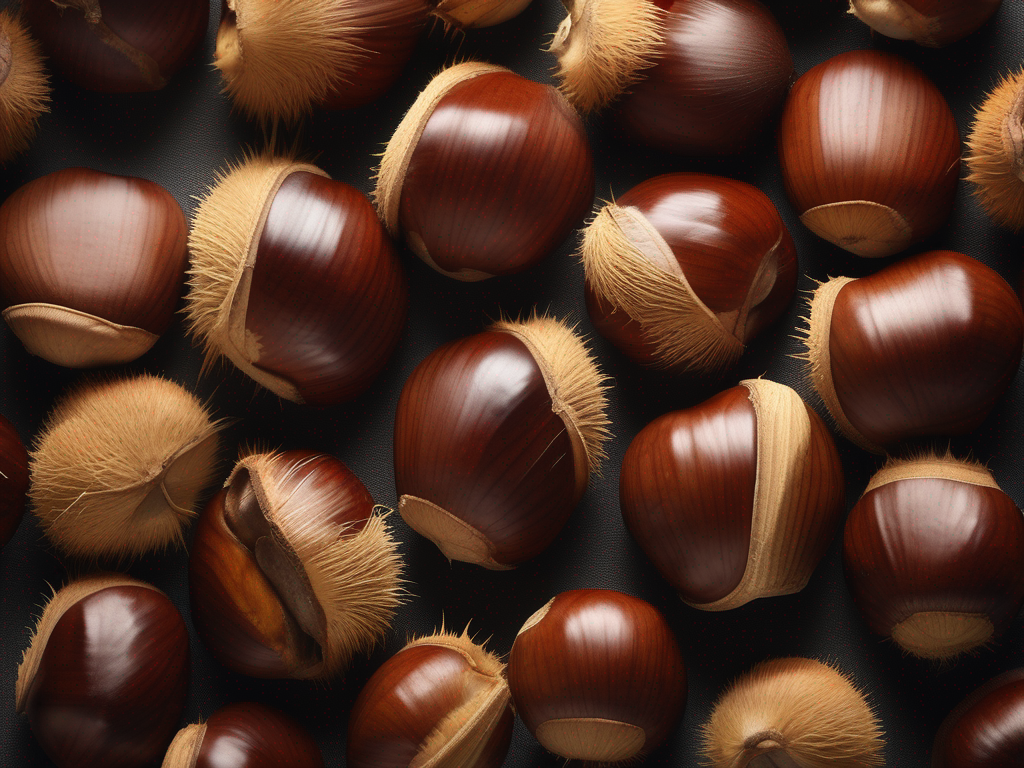
Is Your Chestnut Still Good to Eat? How to Tell if a Chestnut has Gone Bad
Get Your Free Food Safety Cheat Sheet
30 most common foods with instant answers. Print it and stick it on your fridge—completely free!
Is Your Chestnut Still Good to Eat? How to Tell if a Chestnut has Gone Bad
Chestnuts are a delicious and nutritious nut that is enjoyed by many around the world. Whether roasted, boiled, or used in various dishes, chestnuts are a versatile ingredient that adds a unique flavor to any recipe. However, like any other food item, chestnuts can go bad if not stored or handled properly. In this blog post, we will discuss how you can tell if a chestnut has gone bad and provide you with some essential tips on food safety and storage. (Chestnut)
Signs of Spoiled Chestnuts
Chestnuts, like other nuts, have a limited shelf life and can spoil if not stored correctly. Here are some signs to look out for to determine if your chestnut has gone bad:
Visual Inspection
- Mold or mildew: If you notice any mold or mildew on the surface of the chestnut, it is a clear sign that it has spoiled.
- Discoloration: Chestnuts that have turned dark or black in color are likely spoiled and should be discarded.
- Shrinking or wrinkling: Spoiled chestnuts may appear shriveled or wrinkled, indicating that they are no longer fresh.
Smell
- Rancid odor: If the chestnut emits a sour or rancid smell, it is a sign that it has gone bad and should not be consumed.
Texture
- Soft or mushy texture: Fresh chestnuts should be firm and have a slight crunch to them. If the chestnut feels soft or mushy to the touch, it is best to throw it away.
Proper Storage Tips for Chestnuts
To extend the shelf life of your chestnuts and maintain their freshness, it is essential to store them correctly. Here are some practical tips for storing chestnuts:
- Refrigeration: Store chestnuts in the refrigerator in a perforated plastic bag to allow for air circulation. This will help prevent moisture buildup and mold growth.
- Freezing: If you have a large batch of chestnuts, consider freezing them. Place the chestnuts in an airtight container or resealable bag before freezing them.
- Dry Storage: Keep chestnuts in a cool, dark, and dry place away from sunlight and moisture. A pantry or cupboard is an ideal location for storing chestnuts.
- Avoid Humidity: Chestnuts are prone to mold growth in humid conditions. Keep them away from areas with high humidity levels.
- Check Regularly: Periodically check your chestnuts for any signs of spoilage. Remove any spoiled chestnuts to prevent them from affecting the rest of the batch.
Safety Precautions when Handling Chestnuts
When handling chestnuts, it is crucial to practice proper food safety measures to prevent contamination and ensure the quality of the nuts. Here are some safety precautions to keep in mind:
- Wash Hands: Always wash your hands before and after handling chestnuts to prevent the spread of bacteria.
- Cleaning Tools: Clean cutting boards, knives, and other utensils used to prepare chestnuts with hot, soapy water to avoid cross-contamination.
- Cook Thoroughly: Roasting or boiling chestnuts before consuming them can help kill any bacteria or pathogens present on the nuts.
- Store Separately: Store raw chestnuts away from other foods to prevent potential cross-contamination.
Conclusion
In conclusion, being able to identify the signs of spoiled chestnuts is essential for ensuring food safety and preventing foodborne illnesses. By following the tips mentioned in this blog post on proper storage, safety precautions, and recognizing spoilage signs, you can enjoy fresh and delicious chestnuts in your recipes. Remember to always prioritize food safety and quality when handling and storing chestnuts to make the most out of this nutritious ingredient.
For more information on chestnuts and other food safety tips, visit chestnut. Stay safe and enjoy your chestnut creations! (Chestnut)
Authoritative Food Safety References
These agencies and university labs inform every tip and health precaution we publish.
USDA FoodKeeper – Cold Storage Guidelines
Official refrigerator, freezer, and pantry timelines maintained by the U.S. Department of Agriculture.
Visit USDA FoodKeeperFDA Produce Safety Rule & Grower Guidance
Field-to-fridge handling practices that prevent contamination of fruits, vegetables, and leafy greens.
Visit FDA Produce SafetyCDC Foodborne Illness Prevention Hub
Surveillance-backed guidance on pathogens, symptoms, and steps to reduce foodborne illness risk.
Visit CDC Food SafetyUC Davis Postharvest Technology Center
University research detailing optimal storage atmospheres for produce after harvest.
Visit UC Davis PostharvestPenn State Extension – Home Food Preservation & Safety
Peer-reviewed extension bulletins on safe canning, chilling, and reheating practices.
Visit Penn State ExtensionGet Your Free Food Safety Cheat Sheet
30 most common foods with instant answers. Print it and stick it on your fridge—completely free! Want more? Upgrade to the complete guide with 70+ foods.
Scan your food directly and get instant safety info using our AI-powered camera feature.